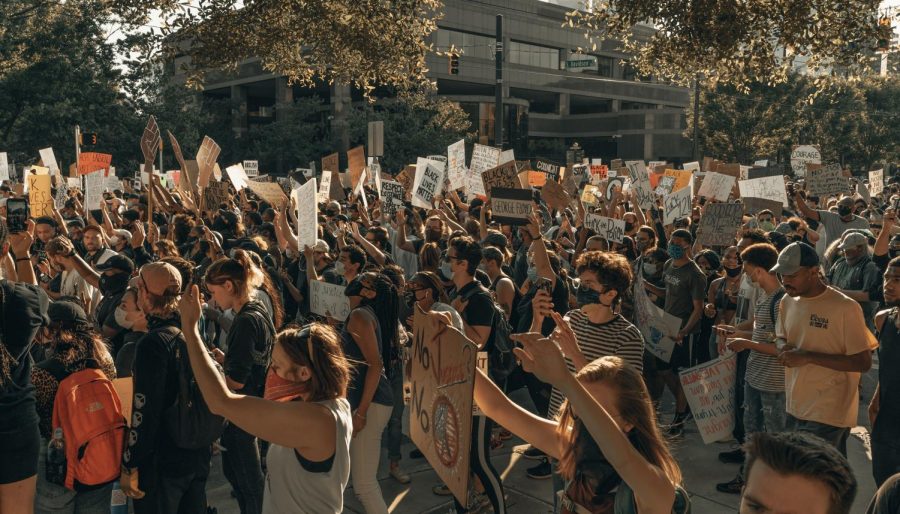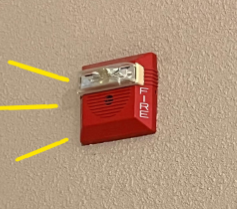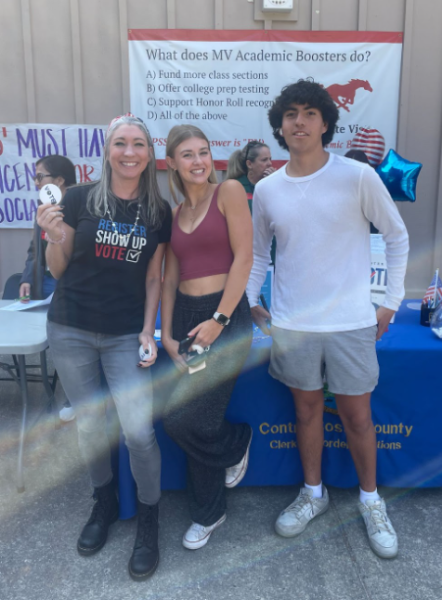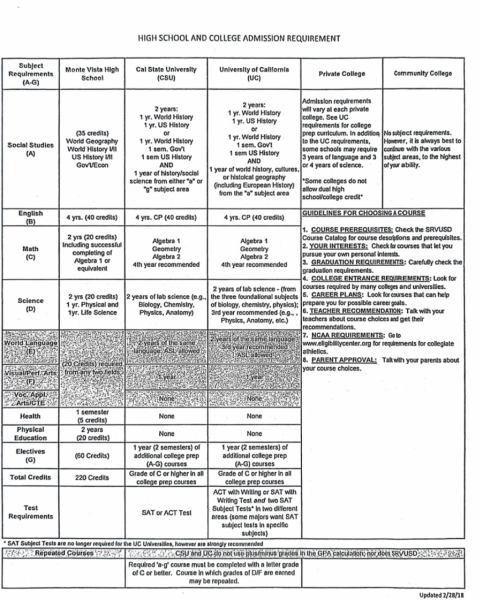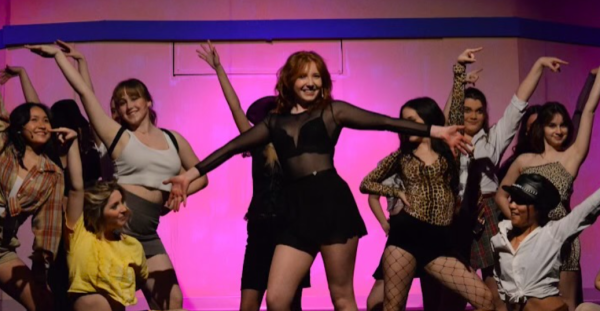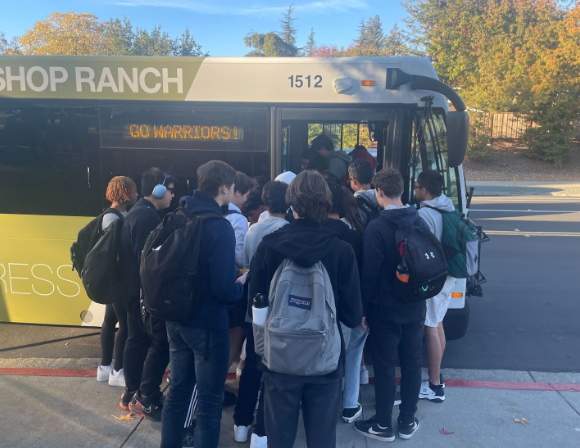Exposing white supremacy at Capitol Hill
Black Lives Matter protesters gather in North Carolina during June of 2020 to combat a racist police system. White privilege was heavily apparent when comparing responses from the Black Lives Matter protests to The Capitol Hill riots.
In an effort to overturn the defeat of former President Donald Trump in the 2020 presidential election, Trump-supporting extremists took to the U.S. Capitol building and attempted a domestic coup on Jan. 6 of this year.
What occurred at Capitol Hill was monumental, to say the least. At the beginning of this unforeseen day, Congress met at the Capitol in order to fulfill an American Democratic tradition of counting the electoral votes, which would certify Joe Biden as the 46th president of the United States. Thousands of mainly white rioters, few wearing masks, gathered at and stormed the Capitol; they scaled the walls surrounding the building and breached through barricades. Waving their Confederate flags, this violent, angry mob forced lawmakers to evacuate the building. Trump is said to have incited the incident after giving a speech on the same day urging his supporters, the so-called “patriots,” to “fight” and march down to the Capitol. Trump later that day made a statement to them saying, “We love you. You’re very special…but you have to go home.” Law enforcement was small in numbers and police even opened the gates holding back the rioters in front of the Capitol.
Many have been comparing the responses from the president, law enforcement, and the media to those made during the Black Lives Matter (BLM) protests that occurred over the summer of 2020. Following the murders of George Floyd, Breonna Taylor, Ahmaud Arbery and many more black citizens, an uproar of BLM protests occurred across the U.S. These protests were mostly peaceful, involving marches, chants, and sitting in silence to honor those unjustly murdered by the police force. But the half a million protesters were met with strong pushback from law enforcement; these officers used teargas, pepper spray, batons, and rubber bullets, and even brought in the National Guard, against mostly non-violent protesters. I must note, however, that the destruction of property and fires did occur. But for the most part, this chaos was not ignited by members of the BLM movement and tended to be caused by random citizens and agitators. Trump was quick to condemn the protesters, who were fighting towards equity for Black citizens and the reform of a systematically racist police force, calling them “thugs,” “terrorists,” and “anarchists.”
“BLM protesters did not have the intention of causing harm or rioting,” said senior Adanna Ogu, the co-president of the Black Student Union. “Black people just wanted to feel seen and for our systems to acknowledge their racism and the consequences that [has on] the Black community.”
But what do BLM protests have to do with the insurrection at the Capitol? For starters, in both instances, a group felt dissatisfied with the government and protested for their beliefs. The key difference, however, is their motivations. BLM was driven by an eagerness to achieve equality and justice for Black Americans, while Capitol rioters were driven by a false belief and carried a goal of violence and the disruption of democracy in order to get their way. Several officials have declared that no voter fraud had occurred, meaning that Biden was the lawful winner of the election. So, no, the insurrectionists were not fighting for justice; they decided to ignore research, completely abandon their mentality of “facts over feelings,” and put democracy at risk.
The most disturbing aspects of the insurrection at Capitol Hill are the glaringly hypocritical reactions from former President Trump and law enforcement. Why weren’t these rioters called criminals? Why did they not face the same critique from the president as BLM protesters? Why were those who partook in BLM attacked and arrested by the police while the rioters were left nearly untouched? The answer to all these questions is white supremacy.
“While I am shocked [about the Capitol Hill riots], this isn’t unexpected,” Ogu said. “There were so many signs that something like this could happen. And honestly, if the rioters were BIPOC then the outcome would have been very different.”
This group of largely white rioters staged an insurrection, violated quite literally all COVID-19 safety guidelines, paraded around taking selfies with police officers, and carried around symbols of slavery (like the Confederate flag) never before seen in the Capitol, not even during the Civil War. Hopefully, this stark contrast in treatment makes it clear to the world that injustice and white privilege exists. One group fought for their lives and another fought because they couldn’t handle the fact that they lost.
“The [American] police system and systems in general are more focused on the well-being of those that aren’t minorities,” Ogu said. “They allow for this kind of stuff to slide.”
The government and law enforcement must adjust the way they deal with people of different racial groups. It is clear from what happened on Jan. 6 that the police have the ability to maintain their calm and to not escalate matters. Now is the time to utilize these traits and apply them appropriately.
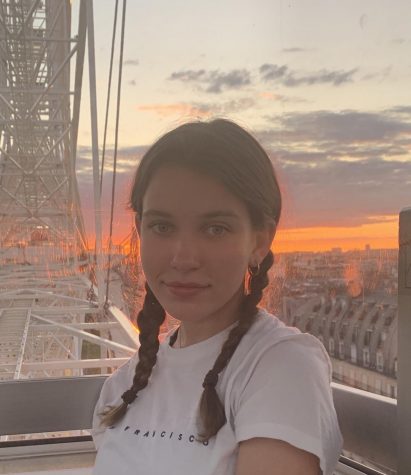
Marie Shvakel is a 16-year-old junior. This is Marie’s third year writing for The Stampede. She enjoys...


